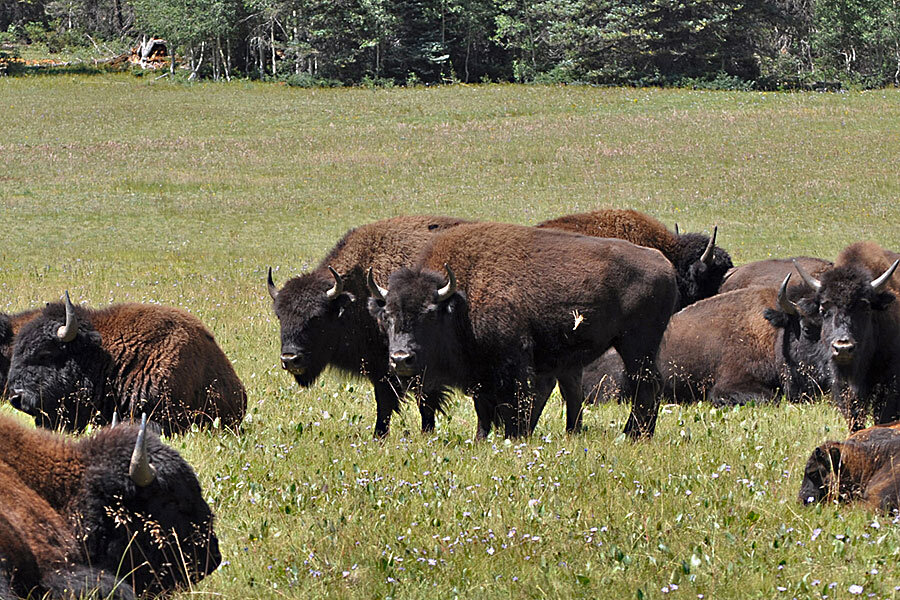Grand Canyon: Bison hybrids trampling park lands, sacred sites
Loading...
| Flagstaff, Ariz.
The herds of bison roaming the northern reaches of the Grand Canyon are causing headaches for park staff as the animals graze in pristine meadows, trample vegetation, damage cliff dwellings and pollute water sources.
The bison were introduced to northern Arizona in the early 1900s as part of a ranching operation to crossbreed them with cattle, creating hybrids known as beefalo or cattalo. The state of Arizona owns and maintains the bison outside the national park, but the animals now are making their home almost exclusively within the boundaries of Grand Canyon National Park.
Federal and state officials are looking at methods to manage the estimated 350-450 bison in a way that rids them from the park and allows for a free-ranging population that can be hunted on nearby forest land. On Wednesday, they announced a trio of public meetings to be held in southern Utah and Arizona and a 60-day scoping period.
"It's the first step in a long process today," Grand Canyon Superintendent Dave Uberuaga said. "We're just trying to get it out there and get it on everybody's radar screens."
The bison no longer look like cattle but still have about 10 percent cattle in their genes. The massive animals have reduced vegetation in meadows to nubs, traveled into Mexican spotted owl habitat, knocked over walls at American Indian cliff dwellings below the North Rim, defecated in lakes and left ruts in wetlands, Uberuaga said. The iconic symbols of the West can weigh more than 2,000 pounds and run three times faster than humans, the agency has said.
While the Arizona Game and Fish Department was able to keep the number of bison around 100, their move to the Grand Canyon means that fewer are hunted because it is outlawed at the national park, said Carl Lutch, wildlife program manager for the department. Permits to hunt bison range from about $360 for a yearling to nearly $1,100 for a bull bison for Arizona residents. Twenty permits were issued for the spring season that runs from January to June 15.
Management methods likely to be brought up during the public scoping period that ends June 6 include baiting, hazing, fencing, relocating the bison and shooting them. Uberuaga said birth control hasn't proven an effective method for controlling the population.
Public meetings are scheduled for April 28 in Kanab, Utah; April 29 in Flagstaff; and April 30 in Phoenix. A couple of online meetings also are planned.
The animals can be seen as visitors drive up to the entrance to the Grand Canyon's North Rim, but they don't stick around long. Unlike bison herds at Yellowstone National Park, Uberuaga said the northern Arizona bison are afraid of the public because of the pressure from hunting and quickly run off into the woods.
Officials at Yellowstone, too, are considering an update to their bison management plan. The herds have lived in Yellowstone continuously since prehistoric times, but park officials have concerns over transmission of disease to livestock in Montana.
Arizona became the owner of the hybrid bison in the northern part of the state after a rancher's experiment to produce a robust type of livestock by breeding cattle with bison largely failed. The offspring of the animals that the state purchased from a cattle rancher in 1926 began walking up the Kaibab Plateau in the late 1990s and into the national park, seeking better forage.
Officials from the National Park Service, Arizona Game and Fish Department and U.S. Forest Service began meeting in recent years on ways to manage the bison. A plan is expected to be issued in the fall of 2016.
Copyright 2014 The Associated Press. All rights reserved. This material may not be published, broadcast, rewritten or redistributed.







